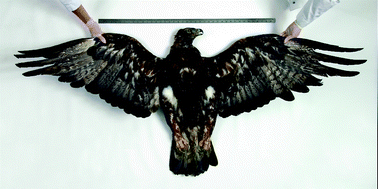A liquid chromatography-electrospray tandem mass spectrometry method for the determination of multiple pesticide residues involved in suspected poisoning of non-target vertebrate wildlife, livestock and pets
Abstract
A liquid chromatography tandem mass spectrometry (LC/MS/MS – triple quadrupole) method that facilitates the qualitative and quantitative determination of multiple pesticide residues that could be present in wild and domestic vertebrate animals has been developed. The method involves the direct analysis of crude extracts from a variety of test specimens taken from (non-target) birds and mammals suspected as being victims of accidental or deliberate exposure to pesticides. Performance of the method was validated following replicate analysis of pseudo-matrices (chicken muscle and chicken liver tissue) that had been fortified with 102 different pesticides and their degradation products at two different concentration levels (0.1 mg kg−1 and 1.0 mg kg−1). Residues detected were quantified following interpolation against external calibration curves obtained using matrix-matched standards that covered a residue concentration range between 0.025 μg ml−1 and 0.5 μg ml−1. Application of the method is demonstrated through inclusion of a few examples that show screening and confirmation results of pesticide residues detected in animals involved in suspected poisoning incidents.


 Please wait while we load your content...
Please wait while we load your content...